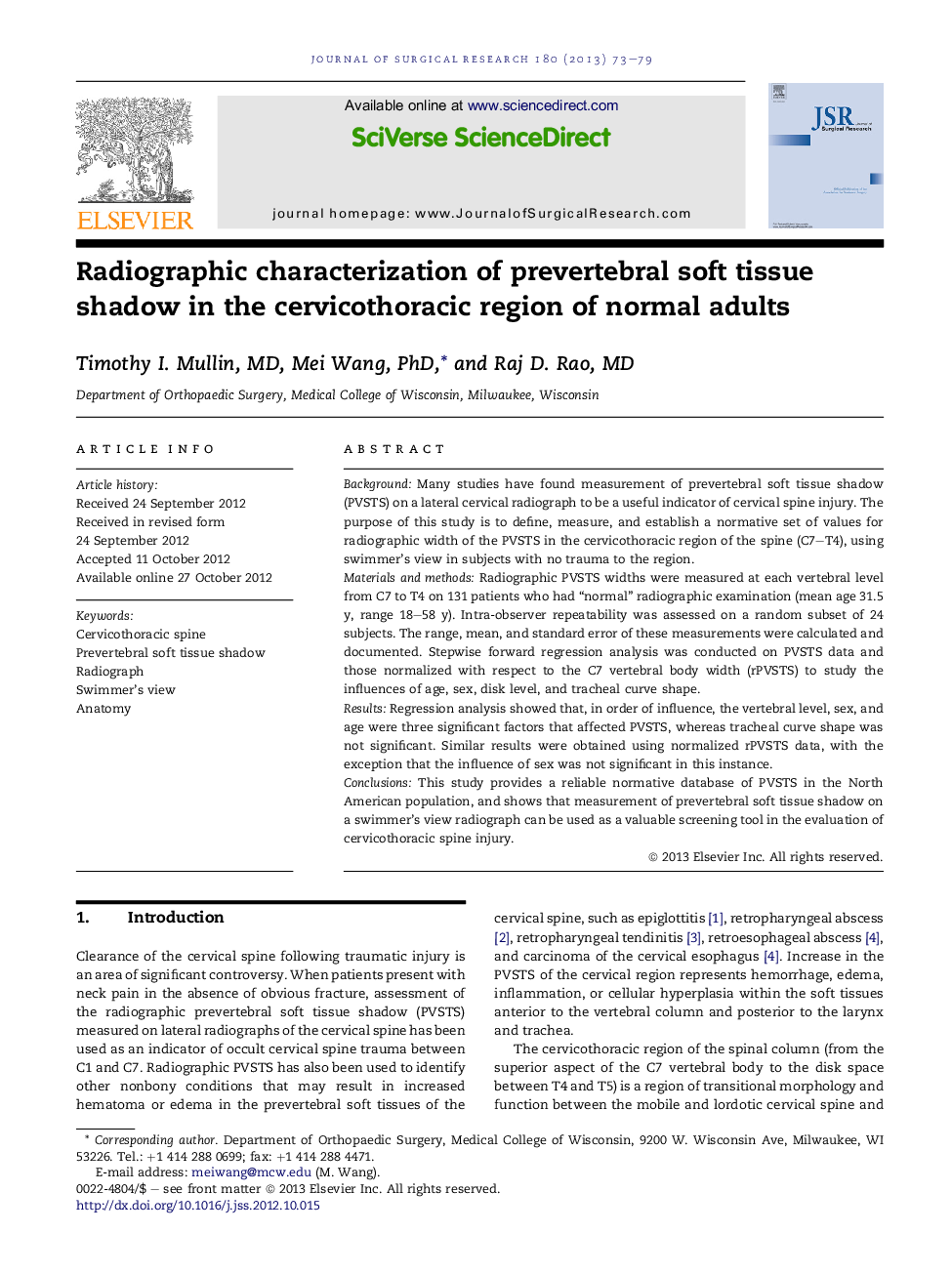| Article ID | Journal | Published Year | Pages | File Type |
|---|---|---|---|---|
| 4301174 | Journal of Surgical Research | 2013 | 7 Pages |
BackgroundMany studies have found measurement of prevertebral soft tissue shadow (PVSTS) on a lateral cervical radiograph to be a useful indicator of cervical spine injury. The purpose of this study is to define, measure, and establish a normative set of values for radiographic width of the PVSTS in the cervicothoracic region of the spine (C7–T4), using swimmer's view in subjects with no trauma to the region.Materials and methodsRadiographic PVSTS widths were measured at each vertebral level from C7 to T4 on 131 patients who had “normal” radiographic examination (mean age 31.5 y, range 18–58 y). Intra-observer repeatability was assessed on a random subset of 24 subjects. The range, mean, and standard error of these measurements were calculated and documented. Stepwise forward regression analysis was conducted on PVSTS data and those normalized with respect to the C7 vertebral body width (rPVSTS) to study the influences of age, sex, disk level, and tracheal curve shape.ResultsRegression analysis showed that, in order of influence, the vertebral level, sex, and age were three significant factors that affected PVSTS, whereas tracheal curve shape was not significant. Similar results were obtained using normalized rPVSTS data, with the exception that the influence of sex was not significant in this instance.ConclusionsThis study provides a reliable normative database of PVSTS in the North American population, and shows that measurement of prevertebral soft tissue shadow on a swimmer's view radiograph can be used as a valuable screening tool in the evaluation of cervicothoracic spine injury.
